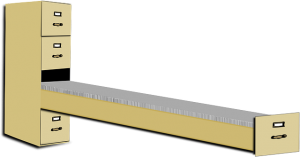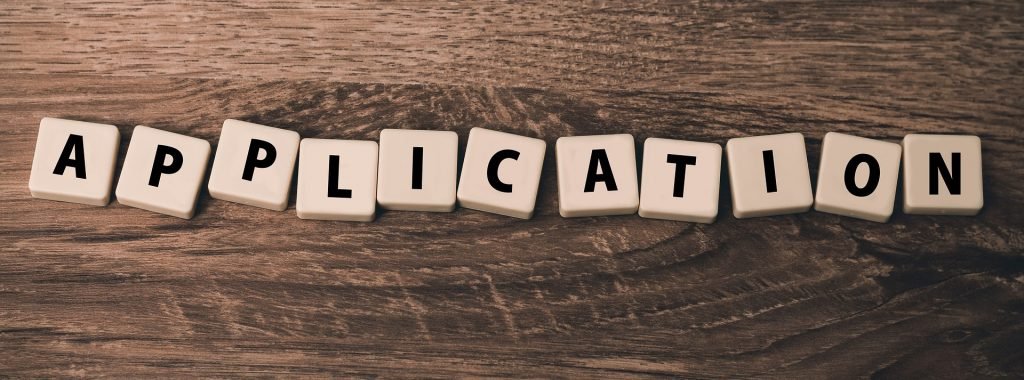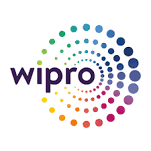Trademark registration is a simple yet a significant aspect of your branding process. Determination of a mark and filing an application for the protection of the same at the Indian Trademark Registry is definitely a vital aspect for your trade/business as it helps to establish you as a competitor in the market and thereby provides a base for you to gain goodwill and reputation in the market. We, at Ediplis Counsels strongly believe that trademark registration is the key to the success of any brand name. Having stressed on the importance of protection of your brand name, this article shall provide you with brief details of the trademark registration process in India, its requisites, procedure, duration and the associated details subsequent to the Trademark Amendment Rules, 2017.
1. Trademark Search
 It is advisable that you conduct/get us to conduct a trademark search for you before you decide to go ahead and file a trademark application, though it is not mandatory, as a trademark search would give you an insight into the similar/same/identical marks that are present in the specific classes of goods or services. Once you know that the trademark search results are positive or that the risks could be overcome, you may proceed with the filing of the application/s.
It is advisable that you conduct/get us to conduct a trademark search for you before you decide to go ahead and file a trademark application, though it is not mandatory, as a trademark search would give you an insight into the similar/same/identical marks that are present in the specific classes of goods or services. Once you know that the trademark search results are positive or that the risks could be overcome, you may proceed with the filing of the application/s.
2. Trademark Filing
 i. Types of Trademark Applications
i. Types of Trademark Applications
There are two types of trademark filings:
1. Word mark
The application is filed for the literal element of the mark i.e., the letters that comprise the mark. The protection is sought for the actual alphabets and numerals of the mark. For instance, when an application for the word mark COCA COLA or CADBURY is filed, the protection is sought for the combination of letters.
2. Logo mark
The application is filed not for the literal element but the stylized representation of the mark i.e., the specific style, font, structure etc. of the logo mark. The application does not provide protection for the actual letters but just the way it looks or is visible to the eye. Please refer to the examples below for more clarity on what qualifies to be a logo application –
This is the stylized representation of the letters Krispy Kreme which is found on its official website. Krispy Kreme is famous for its mouth-watering doughnuts.
This is the artistic representation of the logo of Starbucks which is found on its official website. Starbucks is a famous cafe chain found all over the world.
This is the artistic and stylized representation of the Wipro logo which is found on its official website.
 All the above three representations are valid and qualify for protection as logo applications. The protection claimed over a logo is specific to its usage i.e., how exactly you intend to use the mark in your business. Based on such usage, the logo applications can be classified into two types. They are –
All the above three representations are valid and qualify for protection as logo applications. The protection claimed over a logo is specific to its usage i.e., how exactly you intend to use the mark in your business. Based on such usage, the logo applications can be classified into two types. They are –
- Colour logo – The application seeks protection for the exact colour or a combination of colours used in the logo. It is advisable to choose this kind of application if you are not using any other colour variant for the logo and hence you require protection only for the specific ones claimed in the application. An ideal example of a colour logo is –

- Black and white logo – The application seeks protection for the black and white version of the logo. The advantage that this application would have over a colour logo application is that it would protect a wide array of colours. This application would be appropriate if you do not have a fixed colour combination for your logo or use it in multiple variants. An ideal example of a black and white logo is –

With the new Trademark Rules, 2017 in place, a lot of changes in the filing process and procedure has been brought into force such as the applicant status, reduction in the number of applications, fee associated with each application/form, duration for processing the applications and the documents for the processing of the applications.
ii. Types of Applicants
There are four types of applicants
a. Individual/Sole Proprietor/ Single Firm
You can claim the status of individual/sole proprietor/ single firm if an application is filed in your name and you are using/claim the usage under your individual name.
b. Startup
The new Trademark Rules, 2017 has introduced the startup status for those entities which have just started their business wherein it is recognized as a startup by the competent authority under the startup India initiative. Under this category, you may be a joint applicant, partnership firm, body incorporate, LLP, Hindu undivided family, government body, trust, society etc.
c. Small Enterprise
In order to claim the status of a small enterprise, your investment in plant and machinery should not exceed 10 crores for a product oriented company and your investment in equipment should not exceed 5 crores for a service oriented company. You must also have an MSME certificate from the Ministry of Micro, Small and Medium Enterprises. Under this category, you may be a joint applicant, partnership firm, body incorporate, LLP, Hindu undivided family, government body, trust, society etc.
d. Others
If you are an applicant who does not fall under any of the above categories, then you fall under the ‘Others’ category. Under this category, you may be a joint applicant, partnership firm, body incorporate, LLP, Hindu undivided family, government body, trust, society etc. The difference between the above three categories and this one is that the fee is cut down by 50% for the above three categories of applicants.
iii. Trademark office locations and jurisdictions
The applicant’s location or the state in which he/she operates his/her business plays an important role in determining which Trademark office is the appropriate for the application to be filed. There are 5 Trademark offices in India i.e., Delhi, Mumbai, Kolkata, Chennai and Ahmedabad. Each of these have a specific jurisdiction allocated for it and they can take applications which only fall under their purview and not otherwise. For instance, if the applicant’s business is located in Karnataka the appropriate jurisdiction would be Chennai and for Madhya Pradesh it would be Mumbai. Choosing the correct jurisdiction is extremely important so as to ensure that the application is not rejected for want of appropriate jurisdiction.
iv. Documents required for Trademark Registration
Upon determination of the type of applicant and trademark application type, there are certain documents that the Trademark Registry requires in order to process the applicants. The requirements are as follows –
- ID proof such as passport, birth certificate, 10th standard marks card or PAN card in case the applicant is an individual or sole proprietor.
- MSME certificate in case the applicant is a small enterprise.
- Certificate from the appropriate authority in case the applicant is a start-up.
- An affidavit of use in case the mark in question is in use much before filing the trademark application.
- Authorizations form in case you appoint an attorney to file applications and take actions on your behalf.
- The logo of the mark in case you intend to file an application for an image/logo and CMYK colour codes in case you wish to claim colours associated with the logo.
After the compilation of all the above details and documents, the trademark application is filed.
v. Trademark Registration forms/Applications
Before the amendment in the Trademark Rules, 2017, the Trademark office had around 75 applications for each and every specific action. Now, the total number of applications has been reduced to 8. Each meant for one a specific purpose. Upon the choosing the specific purpose, we may further choose the required action for which the application is filed. In other words, one main application has can help in taking multiple actions.
- TM A – This application is for a fresh trademark for which you seek protection. This application is only when a new application is filed before the Trademark Registry.TM O – This application is either for filing a third party opposition or responding to a third party opposition. You question the registration of a certain mark or respond to one’s question of registration through this application.
- TM R – The registration of a trademark application is valid for a period of 10 years. The registration has to be renewed once in every 10 years. You can use this application for filing a renewal of the mark.
- TM M – Any alteration that you wish to make to the application such as change in the applicant, the date of first use, the change in the colours of the logo etc. before the registration of the mark may be made through this application.
- TM P – Any alteration with respect to the applicant/proprietor of the mark subsequent to the registration of the mark shall be filed through this application.
- TM U – Applications pertaining to the registration and cancellation of the registered user of the mark may be filed in this application.
- TM C – When a copyright application is filed for an artistic work, the copyright office requires the copyright applicant to furnish a clearance certificate from the trademark office that a similar/identical logo has not been registered as a trademark by a different proprietor. This application can be filed to get such a clearance certificate.
- TM G – This application is filed when one wants to register himself or herself as the trademark agent, renewal of trademark agency and relinquishment of such agency by the agent.
vi. Fee for the Trademark applications
The fee associated with each of the above mentioned applications has changed/increased subsequent to the Trademark Amendment Rules, 2017. Each application and its respective action have a certain specific statutory fee associated with it. The same may be advised/suggested to you by us at Ediplis Counsels depending on stage of the application as and when the actions have to be undertaken.
3. Examination Report
The Trademark Registry will examine and scrutinize the trademark application. If it finds any identical/similar mark, or anything contrary to the provisions of the Trademarks Act, 1999 the Trademark Registry will raise an objection.
4. Response to Examination Report
As a practice, a response to the Examination Report has to be submitted before the Trademark Registry. The response to examination report should be filed within 30 days from the day of receipt of the examination report.
5. Advertisement in the Trademark Journal
If the Trademark Registry does not find any similar mark and passes the test of the examiner, the application shall be published in the Trademark Journal for a period of 4 months.
6. Hearing
The Trademark Registry upon receiving of the response to Examination Report shall scrutinize the response and if need be call for a hearing in the jurisdictional Trademark office. The applicant/representative or attorney of the applicant may present his/her case of extensive usage and arguments against the objections raised in the Examination Report by the Trademark Registry. If the Trademark Registry feels that the clarification provided in the response or at the hearing is sufficient, the application proceeds to publication in the Trademark Journal.
7. Opposition
During the publication period i.e. 4 months, any third party irrespective of whether a trademark application has been filed or not or is filed in the same class or not, may file an opposition if for any reason such third party feels that registration of the mark will hinder his/her/its business or business interests through TM O. A response to such opposition may be filed by the applicant through the same form within two months from the date of receipt of the opposition.
6. Evidence and hearing
Once an opposition and response to opposition have been filed. The Trademark office shall request for evidence to support the claims of both the parties and subsequently the Registry calls the two parties for a hearing. Sometimes just one hearing may be sufficient and at others multiple hearings may be necessary.
7. Grant/refusal of the trademark Application
Upon the hearing/s for the opposition and the arguments by both the parties, the Trademark Registry shall decide the fate of the application/s.
The Trademark Registration process is extremely simple especially after the amendment in the Trademark Rules in March 2017. The Registry has been constantly working towards quickening the trademark registration process and moving to take speedy decisions on the applications. We, at Ediplis Counsels always strive to provide the best trademark services to our Clients so as to ensure that the business owner and his/her brand feel safe and secure.


